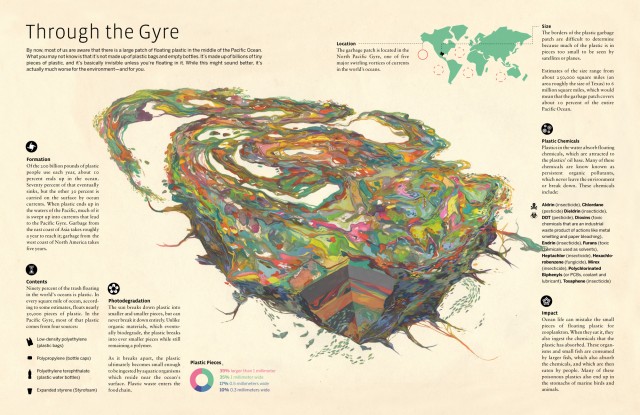Method Ocean Plastic Initiative

Method is known as an industry innovator with its eco-conscious line of household and personal care products. The company’s latest innovation in sustainable packaging is a bottle made out of plastic that washed up on beaches from the North Pacific Gyre, often referred to as the Great Pacific Garbage Patch or the Pacific Trash Vortex.
For those unfamiliar with the Garbage Patch, the infographic below gives a great explanation. I’ve always cringed when I thought about animals getting caught in the floating debris, but what I didn’t realize before is that the patch is not made up of plastic bags and empty bottles. It’s made up of billions of tiny pieces of plastic, and it’s practically invisible unless you’re floating in it. This may sound better, but it’s actually much worse for the environment.

Graphic Illustration by Jacob Magraw-Mickelson via GOOD – Transparency: The Great Pacific Garbage Patch
Method’s new bottle is 100 percent post-consumer polyethylene — 25 percent of which is plastic from the Gyre. Partnering with Envision Plastics, Method was able to make bottles out of a new plastic material — Ocean PCR.
This new material required Method and Envision to develop a new recycling process that allows the plastic to be cleaned, unwanted contaminants removed completely, blended, and then remanufactured into high quality plastic. This creates Ocean PCR plastic that is the same quality as virgin HDPE plastic.
“We’ve created a usable bottle from ocean plastic and upcycled it into something useful that can be recycled again and again. Our ultimate goal is to raise awareness that the real solution to plastic pollution lies in reusing and recycling the plastic that’s already on the planet.”
– Adam Lowry, Method co-founder and chief greenskeeper
If you happen to be in Oahu on either November 19th or December 3rd, you can volunteer to help Method collect plastic for the initial production run of bottles made of ocean plastic. Contact oceanplastic@methodhome.com for details on location and time.
You can read more about the bottles here: Method Ocean Plastic Initiative — TheDieline.com.

Related posts: